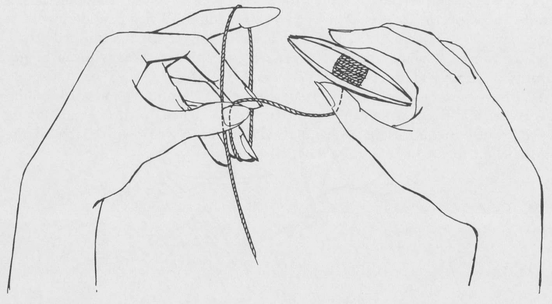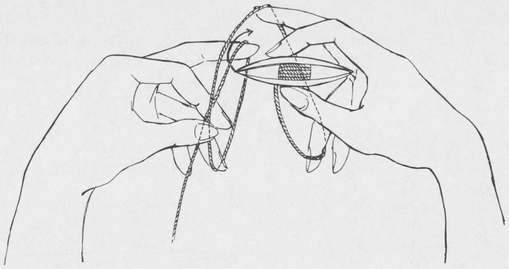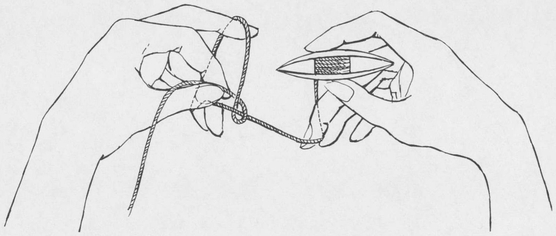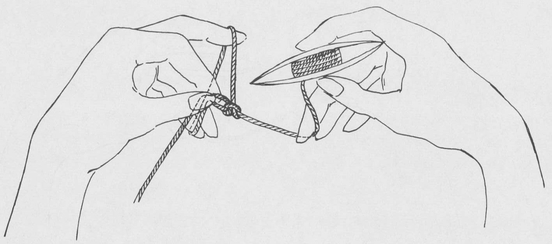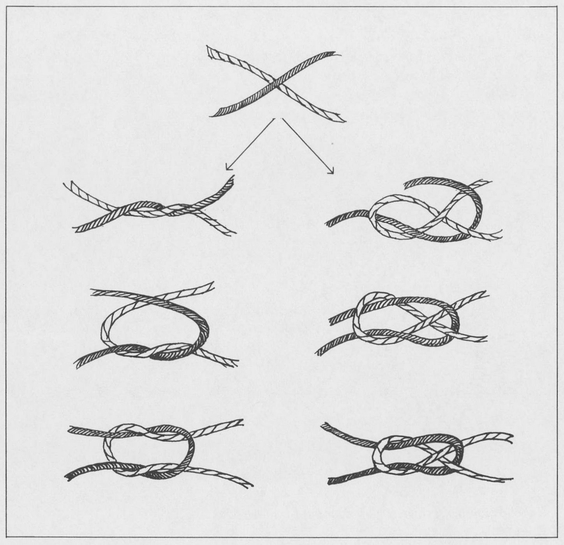Tatted lace needs careful handling. It can be boiled in a saucepan, but should not be stirred or scrubbed. After rinsing thoroughly, lay it between two towels, and let it almost dry. Then pin the lace to something flat, like an ironing board, with a clean towel underneath it. Use rustless pins, sticking one into each loop; this takes time, but it is well worth the trouble. After the lace is dry, it can be ironed, in which case it should be covered by a thin cloth.
Bridal crowns should be starched and put around a bottle of the same size to dry. When they are taken off they will keep their shape and firmness.
1. Tools & Materials
The most important tool for tatting is a shuttle. A shuttle should be about 7cm. (

in.) wide, and made of celluloid, bone, tortoise shell, or plastic. (

in.) wide, and made of celluloid, bone, tortoise shell, or plastic.
It is made up of two tapering discs held together by a middle section called a bobbin. The tips of the discs should touch at both ends to keep the thread from getting loose unintentionally. There is a hole in the middle of the bobbin for threading the yarn. The yarn is pushed through the hole, wound round the bobbin of the shuttle until it reaches the outer edge. Make sure the shuttle is not too full, or the yarn will tend to get dirty and be harder to work with. It is a good idea to have more than one shuttle on hand so that you can try out several patterns at the same time.
In more advanced work requiring two shuttles, it is helpful if the shuttles are different in colour as the two seperate yarns can then be easily distinguished. You will get the best results if you use an even, fine yarn, one with neither too loose nor too tight a twist. This kind of yarn is easy to work with. D.M.C. Cordonnet Special is very good and is available in many different thicknesses and colours. The gauge numbers given in the instructions can, of course, be varied for coarser or finer yarns, as required.
When considering what thickness the yarn should be, take into account the size of the finished article and the intricacy of the motif. As a general rule thicker yarns will suit bigger motifs, smaller yarns more delicate patterns. We have tried out various other materials, such as window blind cord, fishing net twine, and rug warp, in an effort to produce a coarse, rustic effect, but these have proved uncomfortable to handle and difficult to work with. After all, the most delightful quality of tatting is its delicacy!
2.Techniques
Tatting consists of stitches and picots. The most common stitch is the double stitch. Picots are loops made by leaving a distance between double stitches, and it is important for both practical as well as aesthetic reasons that these be even.
For this reason it is important to learn how to handle the shuttle evenly, without any jerking movements.
Joining Rings
When the required number of rings have been made, lift the work round your thumb. Join in the required picot. Both threads must be on the underside of the work.
Fig. 21 .
The starting positionhold the shuttle in the right hand with the thread passed round the left.
Fig. 22 . Pass the shuttle in the direction of the arrow, through the loop of thread in the left hand. Tighten the thread, at the same time closing the fingers of the left hand on the knot.
Fig. 23 . 23 .
Tighten the stitch by again extending the fingers of the left hand. Hold it with the thumb and forefinger of the left hand. Note that the shuttle thread must always be kept tight.
Fig. 24 . The second part of the double stitch.
The index finger of the right hand pulls the thread down, and the shuttle is passed through the loop from the back to the front in the direction of the arrow. Tighten as before. It is also possible to let the shuttle thread hang and to work as in the sketch.
Fig. 26 . Picots. Picots.
These are obtained by leaving a loop of the thread between two stitches. The picot forms through the closing of the double stitches naturally it is necessary to ensure that all the picots are of the same length.
Fig. 27.Joining of rings. This is done with a crochet hook.
Joining Threads
Make a weavers knot (see ).
The join can be made either between two rings or onto the thread which is round the hand. The join should be positioned so that it is hidden by the stitches.
Second Thread from Ball
Make the double stitch of the first ring as usual, tucking in the end and letting it follow the shuttle thread a short distance. When the ring has been completed, make the chain, which requires a second thread, by reversing the work under the ring and round the hand. Proceed as for the first ring.
.
.
A sketch showing the two methods of making a weavers knot.
Two Shuttles
The second thread must be on a shuttle when parts of the chain do not face in the opposite direction to the ring. Two shuttles must also be used for working designs.
Definition of Terms
Inner ring the middle portion of the work. Ring the section of the pattern which is always tightened so that a separate unit is formed. Chain a section of the pattern where the beginning and end are connected.
Josephine knot a section of the pattern consisting of half stitches. The beginning and end do not quite join. Half stitch the first half of a double stitch. Picot a loop between double stitches. A middle ring consisting, for instance, of 2 12, will theoretically contain only eleven picots, but actually it must have twelve.
Nature as a Model
When you have mastered the technique, you will want to create your own patterns.

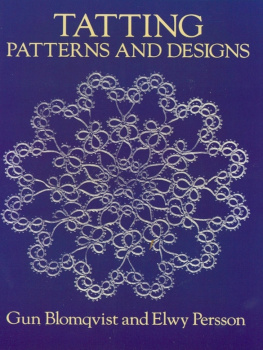
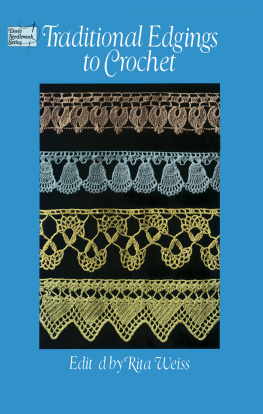
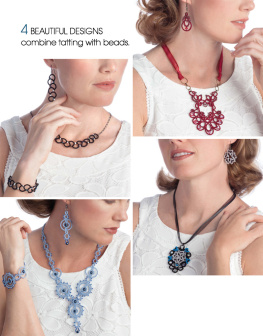


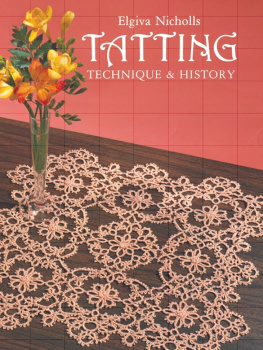
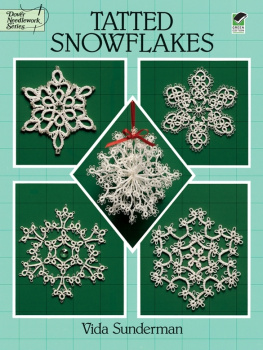
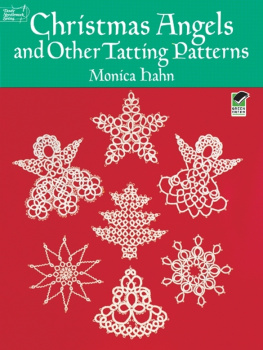
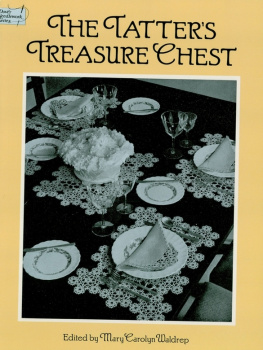


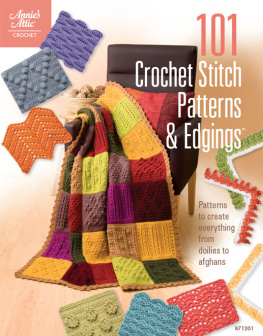


 in.) wide, and made of celluloid, bone, tortoise shell, or plastic. (
in.) wide, and made of celluloid, bone, tortoise shell, or plastic. ( 